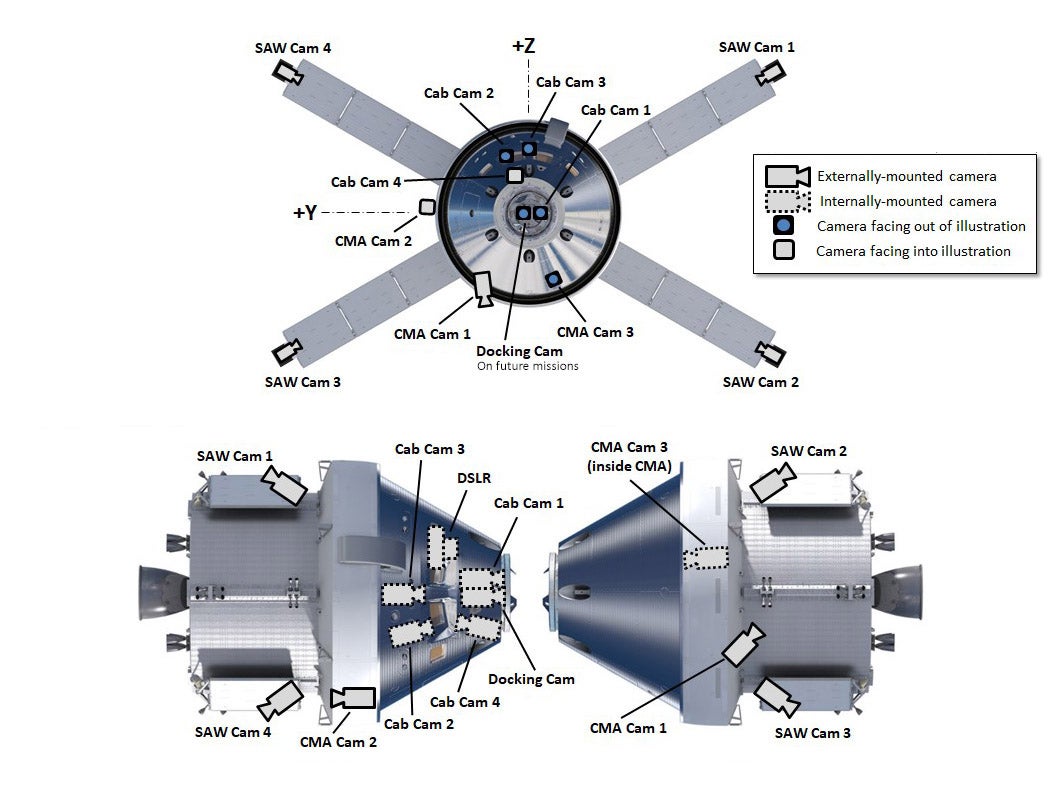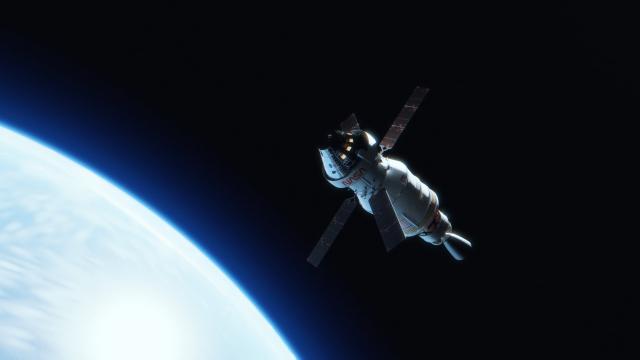The Artemis era has officially begun following the successful launch of NASA’s Space Launch System, which delivered the Orion capsule to space. As the spacecraft begins its first uncrewed trip to the Moon and back, NASA’s on-board cameras will document the entire journey.
NASA has access to 16 cameras aboard Orion that it’s using to document Artemis 1. Orion is currently on a 25-day mission to a point 40,000 miles (64,000 kilometers) past the Moon and back, and NASA’s cameras will help the agency keep an eye on how the spacecraft handles the trip before astronauts climb aboard for future Artemis missions.
NASA says a specialised camera mounted to the crew module will guide Orion via optical navigation. This camera can take pictures of the Earth and Moon, but the size and position of these celestial objects relative to Orion is what allows the capsule to determine its position in space. The camera is also collecting data on distant stars to compare to pre-existing star maps to further help Orion navigate through space.

Among Orion’s many cameras is a camera mounted to the capsule’s exterior, and it’s pointing to the European Service Module, which is propelling Orion to the Moon. Additional cameras are being used to test video conferencing capabilities and to gaze into the blackness of space. Orion also has four cameras fixed to its X-shaped solar array wings that are pointed toward the capsule itself, which will give NASA a 360-degree view of Orion’s exterior. Eight cameras on the European Service Module were used to document booster and core stage separation.
“Each of Orion’s four solar array wings has a commercial off-the-shelf camera mounted at the tip that has been highly modified for use in space, providing a view of the spacecraft exterior,” said David Melendrez in a NASA blog. Melendrez is the imagery integration lead for the Orion Program at NASA’s Johnson Space Centre in Houston.
This week’s launch of Orion is the first step NASA is taking toward a serious pivot back to the Moon and toward future deep space missions. While the portfolio of 16 cameras documenting nearly every move Orion is making may seem excessive, they will be capturing crucial evidence of how the spacecraft fares before its used to shuttle astronauts to the Moon and beyond.
More: What’s Next for the Orion Spacecraft as It Cruises Toward the Moon
